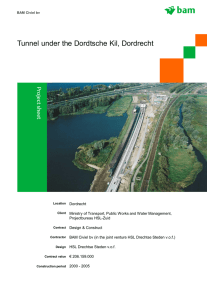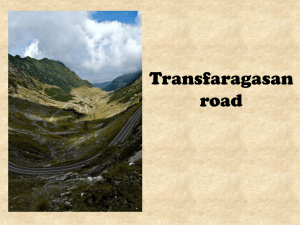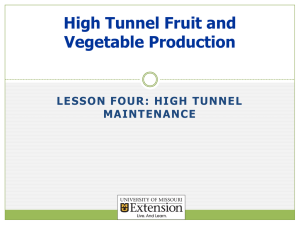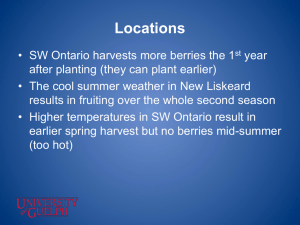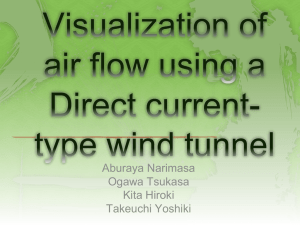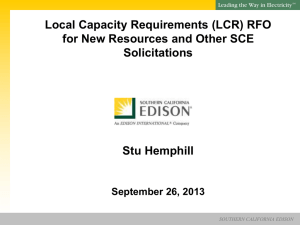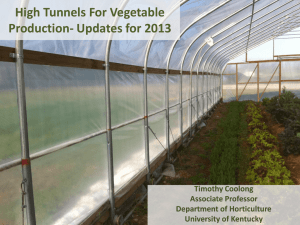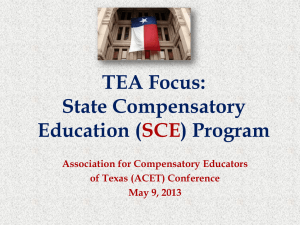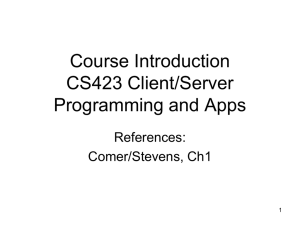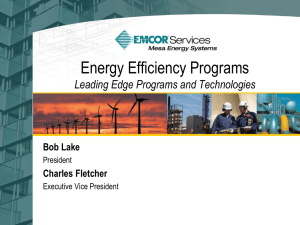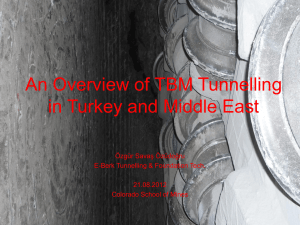Partial Underground Analysis– TRTP Project
advertisement
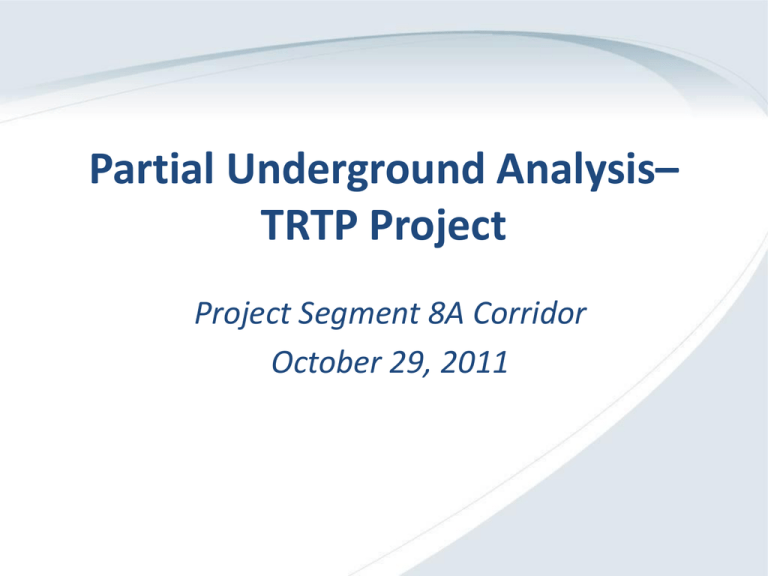
Partial Underground Analysis– TRTP Project Project Segment 8A Corridor October 29, 2011 SCE Partial Underground Alternative Analysis In our opinion SCE has misrepresented the underground options known as Alternative 5 (Partial Underground Alternative) in the EIR, and therefore biased this alternative in favor of the overhead transmission. A short list of specific items from the EIR we believe are inaccurate or simply wrong. Key items that are in error or biased listed below. 1. 2. 3. 4. 5. Size of the transition station Location of the transition station Method of construction Cost of construction Construction schedule 2 1. Size of the Transition Station SCE asserts the size of the transition station to be 220 feet wide and 320 feet long, thereby implying these structures would be too big and not fit in the current right of way. • • • By arranging the transition in vertical configuration as oppose to horizontal configuration the width of the facility can be reduced The length of the configuration has less bearing on the footprint due to the fact that the constraint to the project is the 150 width of the right of way See attached sketches 3 SCE Configuration Note: the 220 foot width 4 Alternative Configuration Stack approach 5 2. Location of East Side Transition Facility The East Side Transition Facility was show to be located .1 mile west of pipe line. By locating this facility east of Pipeline it makes the facility less intrusive and more viable. Location as indicated in the EIR Alternative locations of an East Side Transition Facility just east of Pipeline or east of the 71. 6 3. SCE Method of Construction SCE proposes an 18 foot diameter deep tunnel with various systems, including vent systems, SCADA, power source, etc. In addition the tunnel is expected to be 100 foot deep on the eastern side and up to 420 feet deep on the western side. It is this depth in tunneling that is increasing the cost exponentially. SCE is proposing a using a TBM (Tunnel Boring Machine). The type of transmission line identified was gas insulated transmission line (GIL). GIL transmission line TBM tunnel boring machine 7 Method of Construction An 18 foot diameter tunnel with various systems, including vent systems, SCADA, power source, etc. can still be used but in lieu of a deep tunnel, a shallow tunnel in the 50 to 60 foot depth range can be used. By taking this approach it eliminates the TBM, deep shafts, simplifies the constructions, reduces the cost, and reduces the schedule. The GIL transmission lines also have the added benefits of having the option of direct buried or placed above ground. Above ground Tunnel Direct buried 8 Alternative Method of Construction At 40 to 50 foot depth the construction method for a shallow tunnel can be cut and cover thereby, cutting the cost of construction. In addition, by using the GIL transmission lines it allows the contractor to follow the topography of the alignment. Sloped back trenches Shored trenches 9 4. Cost of Construction SCE asserted that the cost of going underground can be as much as 30 times the cost of going overhead. • • • • Approximate estimate cost per linear foot for aerial installation = $450 per foot. Using the deep tunnel method as suggested by SCE, the approximate cost per linear foot = $13,500 per linear foot. Using the cut and cover (shallow tunnel) method as an alternative, the approximate cost per linear foot = $1,800 per linear foot. Therefore, SCE was off by their calculations by over 650%! 10 5. Construction Schedule SCE asserted that a TBM will be required for a deep tunnel. • • Approximate time it takes to order and fabricate a TBM = 9-12 months If a cut and cover approach is used in lieu of a deep tunnel, no TBM would be required and the project can cut up to 12 months off the schedule 11 SCE Partial Underground Alternative Analysis - Summary As shown many of the SCE key assumptions were wrong or exaggerated in order to be bias against the underground alternative. • • • • • Size of the transition station can be smaller than show in the EIR and therefore, capable of fitting in the pre-existing ROW Location of the transition station was shown in a location that had the most adverse impact to the community. Method of construction selected (deep tunnel) was the most complicate and challenging raising a host of construction issues such as the acquisition of a TBM, deep shafts, dewatering, tunnel portals, etc… that would have been avoided if a cut and cover and shallow tunne approach was used. Cost of construction for a deep tunnel was the most expensive as oppose to the most efficient (cut and cover) thereby, creating an impression that it was too costly. Construction schedule can be cut by approximately one year by not requiring a TBM if a cut and cover tunnel approach was used. In summary, it appears that SCE had a built in bias against this alternative in order to select the aerial approach. 12

